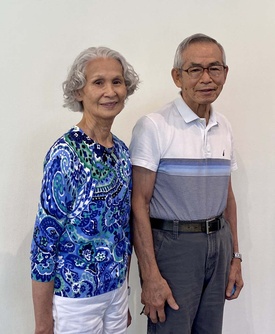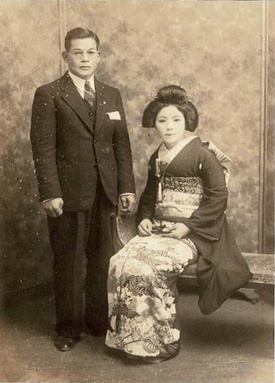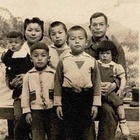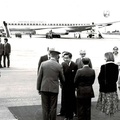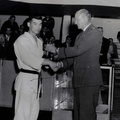When we hear the word "immigration," some may imagine someone moving from one country to another. In the immigration history of each country, the stories of people who settled there tend to be recorded, but the stories of people who moved back and forth, or moved between countries and regions, can sometimes be hard to see due to the cultures and languages in between.
Living in both the Japanese and Japanese American communities in Los Angeles, and through my work at the Japanese American National Museum, I have had many opportunities to meet people with rich individual stories that differ from the stereotypical images historically associated with terms such as "Nisei," "Sansei," and "Kibei." In this series, I would like to record the stories of the postwar Japanese immigrants who returned to America and whose first language was mainly Japanese, whom I met in these environments.
* * * * *
The first person to appear in this series is Toshiyuki Seino, who returned to the United States after the war. Many people who practice judo in the United States may know his name. He is a famous judoka who has been inducted into the American Judo Hall of Fame. However, from his gentle appearance, it may be hard to guess that he is a judoka known for the "Hanegoshi" technique.I first met Toshiyuki-san during preparations for the exhibition " Under the Mushroom Cloud: Hiroshima, Nagasaki and the Atomic Bomb ," held at the Japanese American National Museum in 2019, co-hosted by the cities of Hiroshima and Nagasaki. I initially knew him as the husband of Midori Seino, secretary of the American Association of Hiroshima and Nagasaki Atomic Bomb Survivors (ASA), who lent a great deal of support to the preparation of the exhibition. I cannot clearly remember whether the words we exchanged were in English or Japanese, as he stood tall and straight. He spoke both languages fluently, and I remember being very interested in what kind of person he was.
While I was talking to Howard Kakita, a Japanese-American sansei (third-generation Japanese American) and atomic bomb survivor, for this exhibition ( the video of Howard's interview is posted on Discover Nikkei), we talked about his time at the Hollywood Judo Dojo in Virgil Village, Silver Lake, an area formerly known as "J Flats" where many Japanese people lived, and I learned that Toshiyuki had also trained there. When I got home, I asked an older friend of mine who was a third-generation Japanese American and used to attend the dojo, if he knew him, and he replied excitedly, "Toshi! He's a legendary judoka!"
When the A-bomb exhibition opened and the ASA members came to see it, I had a chance to talk with Toshiyuki in front of a photo of Frank Emigh of the Heart Mountain Fair Play Committee, which is in the museum's permanent exhibition. Frank Emigh and his brother Art Emigh were also members of the Hollywood Judo Dojo, and Frank and Art Emigh were instructors there. The Heart Mountain Fair Play Committee was a group of young Japanese Americans who protested against being drafted from the internment camps, where their civil rights had been taken away, and tried to restore the civil rights of Japanese Americans through the courts, and Frank was a central figure in the group.
Then, in 2020, the COVID-19 pandemic hit, Los Angeles was ordered to stay at home, and the museum was temporarily closed. It reopened in the summer of 2021, when the infection situation had calmed down a bit, and we were able to speak with Toshiyuki (hereafter, titles will be omitted).
* * * * *
Toshiyuki Seino was born on October 26, 1938 in Hawthorne, Los Angeles, California, as the second child of Matsukichi Seino, an immigrant father from Japan, and Fumiko, a second-generation Japanese-American mother. His father, Matsukichi, came to America in 1920. When Matsukichi was 10 years old, he was invited by his eldest son, Toichi, who had previously come to America and worked as a farmer, and together with his third son, Kazuji, he traveled to America from Tsunuki, Kaseda City, Kagoshima Prefecture.
At that time, there was a wholesale fruit and vegetable market on Alameda Street between 9th and 11th Streets in Downtown Los Angeles, where many Japanese farmers sold their vegetables and fruits. The Seino brothers also brought the vegetables they grew there to sell. Matsukichi also went to school in the United States. His American name was Joe.
Meanwhile, her mother, Fumiko, was a second-generation Japanese born in the United States. Her parents ran a pharmacy in Elk Grove, a town near Sacramento, but the family returned to Japan when Fumiko was two years old. Fumiko graduated from a girls' school in Japan. She later married Matsukichi, who had returned to Japan for a short time, and returned to the United States in 1936 at the age of 19.
"My mother's family is from Tsunuki in Kaseda City, Kagoshima Prefecture. My cousins are from there too, and quite a few people have come to America from there. Almost every household around there has someone going abroad," says Toshiyuki.
According to the boarding records, when Matsukichi and Fumiko returned to the United States in 1936, Fumiko's younger brother also went to the United States with them.
At the time, the Immigration Act of 1924 made Japanese people "unnaturalized aliens" unable to immigrate to America, and they were also unable to bring wives from Japan as "picture brides." Furthermore, in states such as California, there were laws banning interracial marriages, and in Japanese American society, where the numbers of men and women were disproportionate, a significant number of Japanese immigrant men remained unmarried throughout their lives. However, because Fumiko was a Japanese American with U.S. citizenship, she was not an immigrant, but a returnee to America.
© 2022 Masako miki


